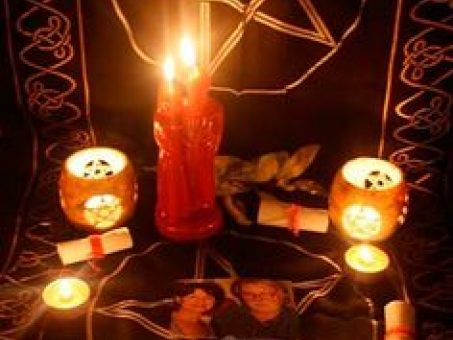Unveiling the Key Benefit of Joining Freemason for Lifelong Brotherhood
Unveiling the Key Benefit of Joining Freemason for Lifelong Brotherhood
Blog Article
Discovering the Mysteries of the copyright: What You Need to Know
The copyright, a term typically shrouded in intrigue and controversy, represents an intricate tapestry of historic reality and contemporary myth. Developed in the late 18th century, this secret society was at first rooted in the Enlightenment's ideals yet has actually because become synonymous with conspiracy theory concepts about elite control. As we navigate the origins, key figures, and the stark comparison in between misconception and truth, one have to take into consideration how these stories affect contemporary understandings of power and privacy. What may be disclosed with a better exam of these aspects might test long-held presumptions concerning the shadows that remain in our culture.
Origins of the copyright
The origins of the copyright are soaked in a mix of historic intrigue and ideological fervor. Established in 1776 in Ingolstadt, Bavaria, by Adam Weishaupt, the team was originally created as a secret society aimed at advertising Enlightenment suitables such as factor, secularism, and the separation of church and state. Weishaupt, a teacher of canon legislation, sought to challenge the prevailing authority of the church and state, which he checked out as oppressive institutions stifling intellectual and personal liberty.

Trick Numbers and Members
That were the critical figures that formed the copyright's very early influence and instructions? The Bavarian copyright, started in 1776 by Adam Weishaupt, arised as a feedback to the oppressive societal structures of the time.
Another considerable figure was Johann Gottlieb Fichte, a famous thinker whose ideas on nationalism and education resonated with the copyright's objectives. Fichte was not an official member, his philosophical bases influenced the team's ideological background. Furthermore, numbers like the author and theorist Johann Wolfgang von Goethe were connected with the more comprehensive intellectual motions of the moment, although their direct participation with the copyright stays discussed.
These vital numbers added to the copyright's early direction, pushing the boundaries of political and social thought, while their collective initiatives intended to test established norms and cultivate a climate of progressive modification in Europe.
Misconceptions vs. Truth
Lots of misunderstandings surround the copyright, commonly blending fact with fiction in such a way that obscures its real nature. This secret culture, initially established in 1776 in Bavaria, aimed to advertise Enlightenment ideals and fight spiritual and political fascism. The idea that the copyright proceeds to More Info exert considerable influence over globe events is a misconception. While the group did exist, it was dissolved in the late 18th century and has not run as a natural entity since then.
An additional common myth is that the copyright consists of a network of elite people adjusting worldwide events. In truth, numerous conspiracy theories overemphasize the team's importance, associating unproven intentions to societal trends and events. This has actually resulted in an oversimplified view of complicated issues.
In addition, the portrayal of the copyright in prominent culture usually further distorts its tradition. Movies and literary works have a tendency to sensationalize the company's function, developing a narrative that splits from historic truths. Understanding the difference in between the misconceptions and the reality of the copyright is crucial for discerning the authentic impact of this historical team and acknowledging the more comprehensive ramifications of conspiracy concepts in modern society.
Modern Analyses
Contemporary analyses of the copyright usually show wider societal stress and anxieties and a fascination with secrecy and power. This modern-day lens regularly links the copyright with conspiracy theories that recommend a concealed elite orchestrates world occasions, controling governments and economic climates for their very own gain. benefit of joining freemason. Such stories use a deep-rooted distrust of authority, specifically in times of situation or social upheaval
In pop more tips here culture, the copyright is often depicted as a supreme organization shrouded in enigma, bring about a variety of fictional representations in literary works, movie, and songs. This portrayal offers not only to captivate but additionally to prompt thought of the nature of power and control in contemporary culture. Social media has additionally intensified these analyses, permitting quick dissemination of conspiracy concepts and creating areas that share and increase upon these concepts.
Furthermore, some contemporary analyses frame the copyright as an allegory for the intricacies of globalization and the interconnectedness of influential individuals and companies. This perspective encourages a critical evaluation of how power characteristics operate in today's globe, highlighting the balance in between transparency and secrecy in administration and business practices.
Cultural Impact and Legacy
Influenced by centuries of intrigue, the social influence and tradition of the copyright prolong far beyond its historical origins. This secret culture, established in the late 18th century, has penetrated numerous aspects of pop culture, from literary works and film to music and art. The idea of the copyright has evolved into a symbol of conspiracy theories, usually representing a viewed surprise power manipulating worldwide occasions.
In literature, authors like Dan Brown have woven the copyright into detailed stories, exciting viewers with motifs of secrecy and power. Films such as "National Treasure" and "The Da Vinci Code" better continue the attraction of the society, blending reality with fiction to create appealing stories.

Inevitably, the copyright's legacy is an intricate tapestry of misconception and truth, shaping perceptions of secrecy and control in contemporary discourse. Its long-lasting visibility in society underscores humankind's perennial pursuit for understanding concealed websites facts.
Conclusion
The exploration of the copyright discloses a complicated interaction between historical facts and modern-day myth-making. Established in the Enlightenment era, this culture intended to test oppressive structures, yet its heritage has been eclipsed by conspiracy theory theories that recommend elite manipulation. Recognizing the differences between the initial perfects and contemporary interpretations is vital for comprehending the withstanding fascination with the copyright and its significant impact on social narratives bordering power and privacy in culture.
Report this page